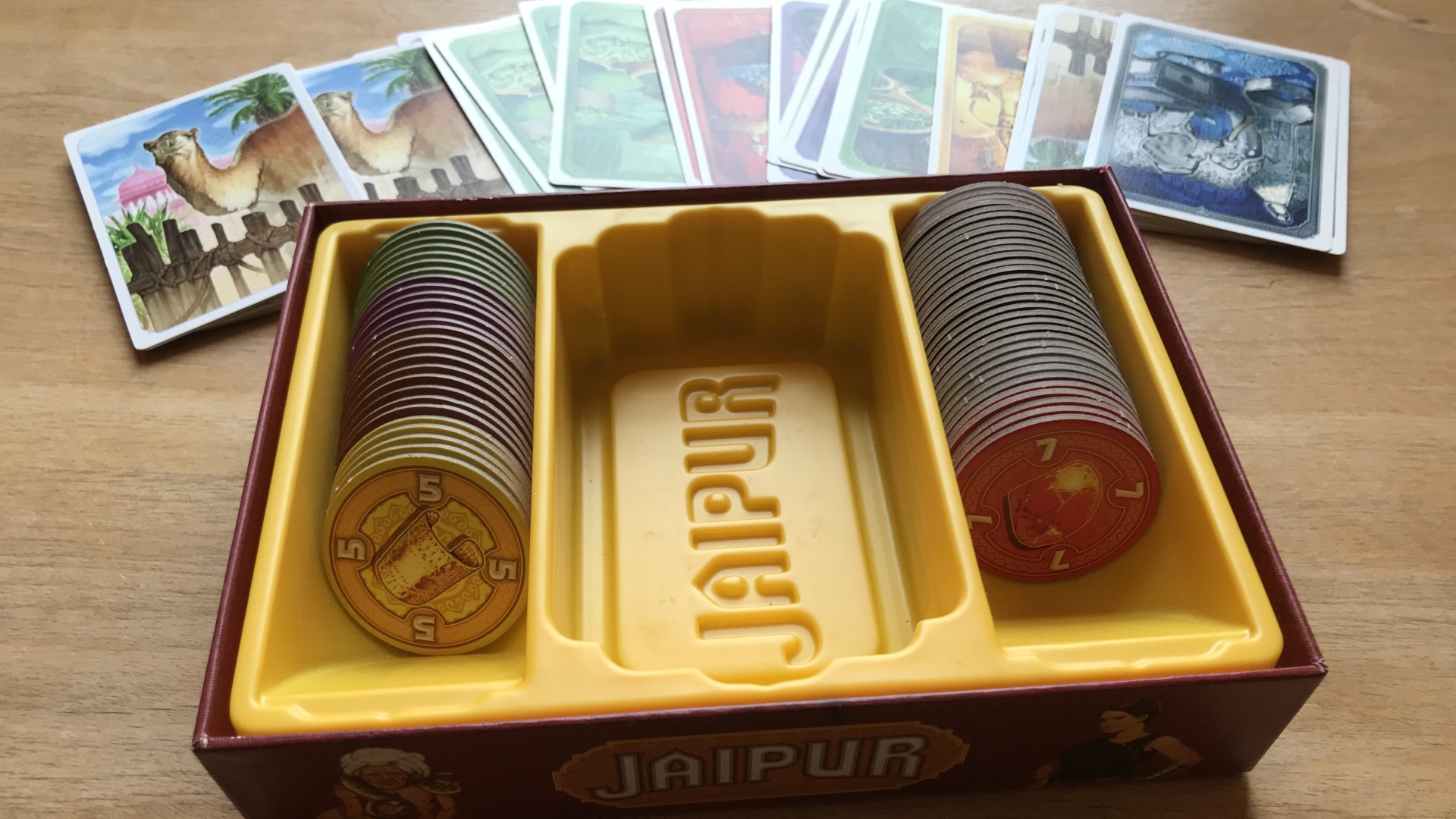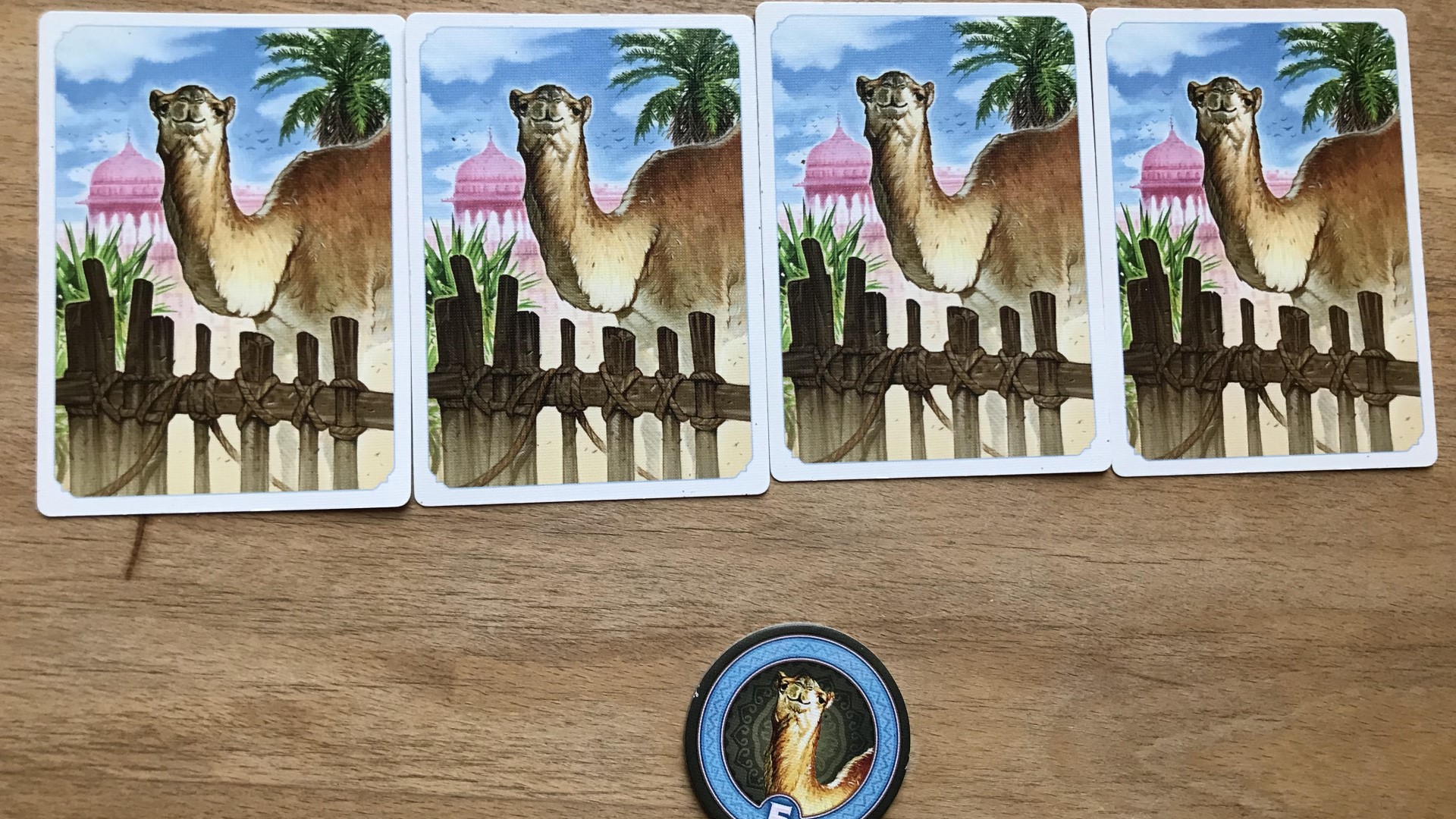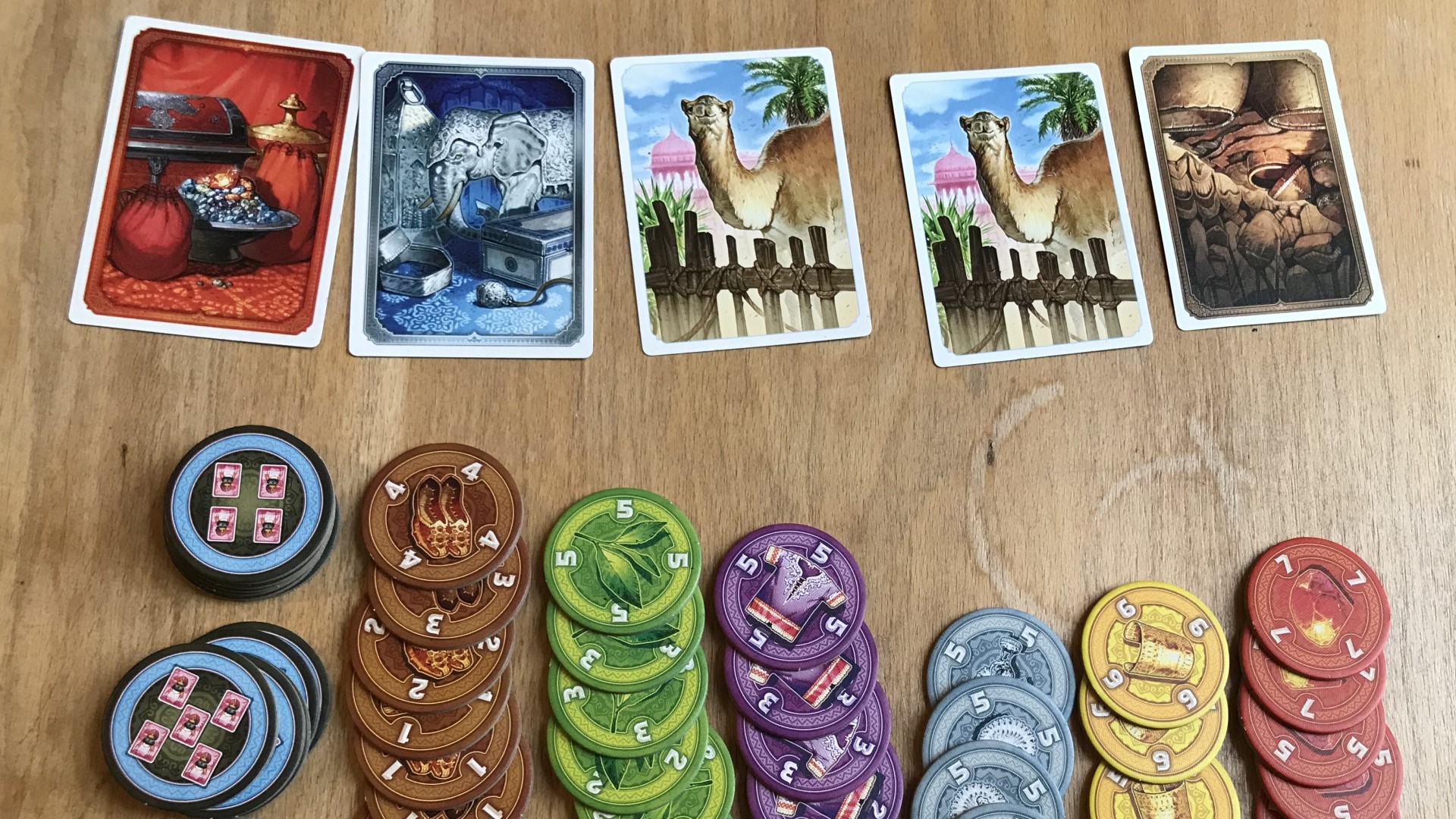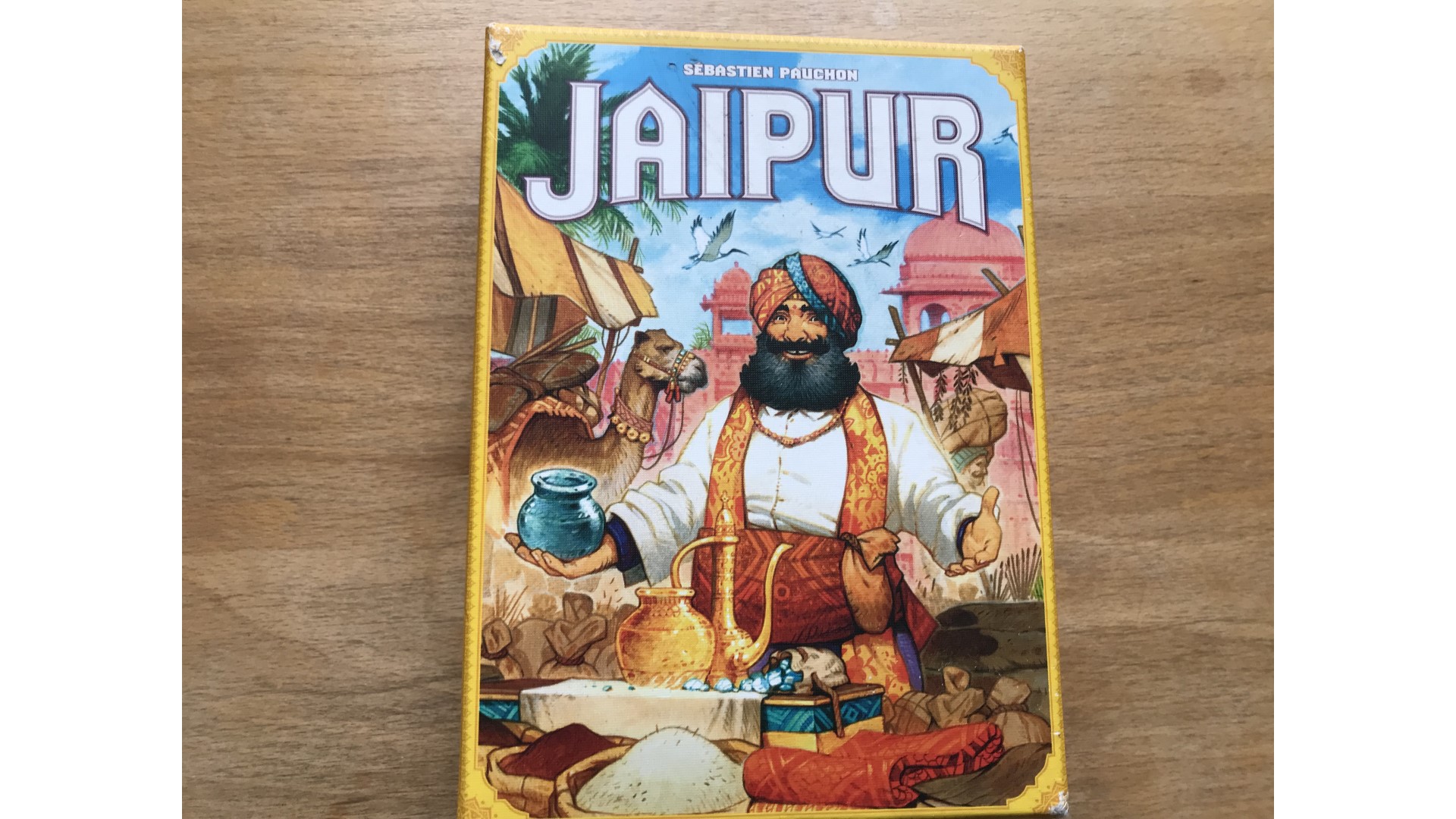Jaipur is one of the best two player board games of all time, a tight trading game in a tiny box, it can be enjoyed by anyone, whether it’s their first board game or their thousandth.
It’s a fantastic couple’s board game: a deep but accessible puzzle that’s competitive without being too mean. Jaipur is endlessly replayable, and – a nice cherry on top – it comes in a very attractive package. In this here Jaipur board game review, we’ll tell you why we think it’s one of the best board games ever.
In Jaipur, players take on the role of merchants, from the titular Indian city of Jaipur. Trading’s the name of the game. Each turn you’ll take one action, either plucking shiny new goods from the market – a shared, constantly replenishing central row of five cards – or cashing cards in from your hand for the goods and bonus tokens that’ll score you points.
To collect new goods, you can either pick up one card for free, take multiple cards (but you must replace these with cards from your hand) or scoop up any and all camels on the market. It’s simple, but it creates very effective moment-to-moment decision making. You can play conservatively, or give up certain goods to try to collect a full set of another, risking benefiting your opponent for the chance at a big sale.
Camels (lovely animals though they are) are useless by themselves in Jaipur, but can be an invaluable resource when you exchange them for the perfect batch of cards. Taking lots of camels at once sets you up for a big play later, but also reveals random goods for your opponents to pursue. Perhaps nothing but leather will come up, but you might hand your foe a haul of gold or silver – so grabbing these even-toed ungulates is a major, and exciting risk.
Selling is the other half of Jaipur, when you can exchange your tea, leather, or coveted jewels for sweet, sweet points. Again, the resources here are shared; you’re each vying for the same stack of goods tokens. Crucially, some goods are worth more than others, and the first tokens in each stack are worth much more than the last, incentivising you to gobble them up quickly and corner the market. However, you also score bonus tokens if you can collect a set of three, four, or five of the same good, and sell them off in one turn.
This leads to a fun push-your-luck element. You can hurriedly skim the most points-scoring tokens off the top of the market, or save up for one huge turn that’ll bag you a valuable bonus. You can aim to buy as much as possible in a round, or rush to end the game before your opponent is ready, by depleting two types of goods.
The great thing about Jaipur is that it’s both complex and accessible at the same time. It’s very easy to explain and super quick to play, but there’s much deeper strategy here than you might first assume – though with a crucial element of luck which means a less serious player still has a chance to triumph.
Because Jaipur is strictly a two player card game, and you’re always working with the same resources, you’re always reacting to what your opponent is doing. Every move you make has a massive impact on your opponent’s next turn, so there’s a beautiful push and pull to the game, as you try to make plays that will put you ahead while disadvantaging the other player.
As I suggested at the beginning though, it’s not in the least bit cutthroat. You never take an action to directly screw over another player – as you can’t interact directly with them. A good Jaipur move is more like cornering an opponent’s piece in chess than when someone lands on your hotel in Monopoly. There’s no feel-bad moment, so it could be a good kids board game, especially given how easy it is to learn.
There’s a surprising number of strategies in Jaipur, and you’ll find yourself trying out new approaches as you gain experience – while also learning to respond to an opponent’s style. It’s fast-paced and portable too, which makes it the ideal lunch break or filler game, outside of large groups. There’s limited options each turn, so you’ll never spend much time umming and ahhing over a move and you can easily get in a best-of-three game within half an hour.
Overall, Jaipur is a fantastic mixture of risk, strategy, planning, and luck, resulting in an exciting and very well-designed game. There’s an intriguing puzzle here, which is always fun to pick at, and can be approached for numerous angles. The worst thing I can say about Jaipur is it doesn’t quite fan the flames on my competitive spark the way a game like, say, Quacks of Quedlinburg does. I never regret pulling it off the shelf, but after I’ve played, it doesn’t leave me immediately desperate for one more go.
Still, if I’m looking for a quick board game to play with a friend or family member, especially someone new to board games, it’ll be Jaipur I reach for every time.




